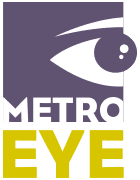Everywhere we look, we’re reading, shopping, banking or being entertained online on digital devices small and large—at work, at school, at play and on our way in-between. In fact, according to the American Optometric Association’s (AOA) 2014 American Eye-Q® survey, 55 percent of adults use computers, smartphones, tablets or other handheld devices for five or more hours a day. And a separate AOA survey showed that 83 percent of children between the ages of 10 and 17 use an electronic device for more than three hours a day. Digital use will continue to increase, making it more important than ever for consumers to make smart eye care choices and to see an eye doctor for yearly comprehensive eye exams.
Below are three tips from the American Optometric Association in observance of their Save Your Vision Month in March.
Give Your Eyes a Break
We recommend following the 20-20-20 rule to ward off digital eye strain–take a 20-second break every 20 minutes and view something 20 feet away.
“Although ongoing technology use doesn’t permanently damage vision, regular, lengthy use of technology may lead to a temporary condition called digital eye strain,” said Dr. Amy Jankowski “Symptoms can include burning or tired eyes, headaches, fatigue, loss of focus, blurred vision, double vision or head and neck pain.”
Early research has also shown that overexposure to high-energy, short-wavelength blue and violet light emitted from electronic devices may contribute to digital eyestrain. Blue light could also increase the likelihood of developing serious eye conditions such as age-related macular degeneration. Optometrists offer lens options including non-glare, filtering lenses, to help protect vision from harmful blue light.
Be a Savvy Shopper
Shopping online can be great for some products that aren’t individually custom-made like prescription eyeglasses are; health and safety trump convenience when it comes to eyewear. Internet orders often result in incorrect prescriptions or other problems with products that get sent through the mail, costing consumers more time and money in the long run. According to a 2011 study conducted by the AOA, the Optical Laboratories Association and The Vision Council, nearly half of all glasses ordered online had either prescription errors or failed to meet minimum safety standards.
“Eyeglasses are an investment in your health and must be custom-fitted not only to be comfortable, but also to be sure precise prescription needs are met so that you’re actually seeing your best,” said Dr. Jankowski
Skip Shortcuts
When it comes to really seeing what’s going on with your eyes, there is no substitute for a comprehensive, yearly eye exam by an eye doctor. Despite catchy claims, there is truly no ‘app’ for that. While a variety of new mobile applications claim to evaluate vision or the fit of eyeglasses, often these apps give inaccurate or misleading information, and misinformed consumers end up delaying essential, sight-saving exams. Early diagnosis and treatment are critical and can often prevent a total loss of vision and improve quality of life.
“Comprehensive, yearly eye exams are one of the most important, preventive ways to preserve vision, and the only way to accurately assess eye health, diagnose an eye disorder or disease, and determine if you need corrective lenses,” said Dr. Jankowski
To make an appointment for a comprehensive eye exam with Dr. Jankowski or for additional information on eye health in the 21st century, please stop by our new location at 325 E. Chicago St. in the Third Ward or call us at (414) 727-5888.
About the American Eye-Q® survey:
The ninth annual American Eye-Q® survey was created and commissioned in conjunction with Penn, Schoen & Berland Associates (PSB). From March 20-25, 2014, PSB conducted 1,000 online interviews among Americans 18 years and older who embodied a nationally representative sample of the U.S. general population. (Margin of error is plus or minus 3.10 percentage points at a 95% confidence level)
About the Children’s Omnibus survey:
The children’s Omnibus survey was created and commissioned in conjunction with Penn, Schoen & Berland Associates (PSB). From March 24-31, 2014, PSB conducted 200 online interviews from March 24-31, 2014 with children ages 10 to 17. (Margin of error is plus or minus 6.93 percentage points at a 95% confidence level)
About the American Optometric Association (AOA):
The American Optometric Association, a federation of state, student and armed forces optometric associations, was founded in 1898. Today, the AOA is proud to represent the profession of optometry, America’s family eye doctors, who take a leading role in an individual’s overall eye and vision care, health and well-being. Doctors of optometry (ODs) are the independent primary health care professionals for the eye and have extensive, ongoing training to examine, diagnose, treat and manage disorders, diseases and injuries that affect the eye and visual system, providing two-thirds of primary eye care in the U.S. For information on a variety of eye health and vision topics, and to find an optometrist near you, visit aoa.org.
Photo credit: hansvandenberg30 / Foter / CC BY

